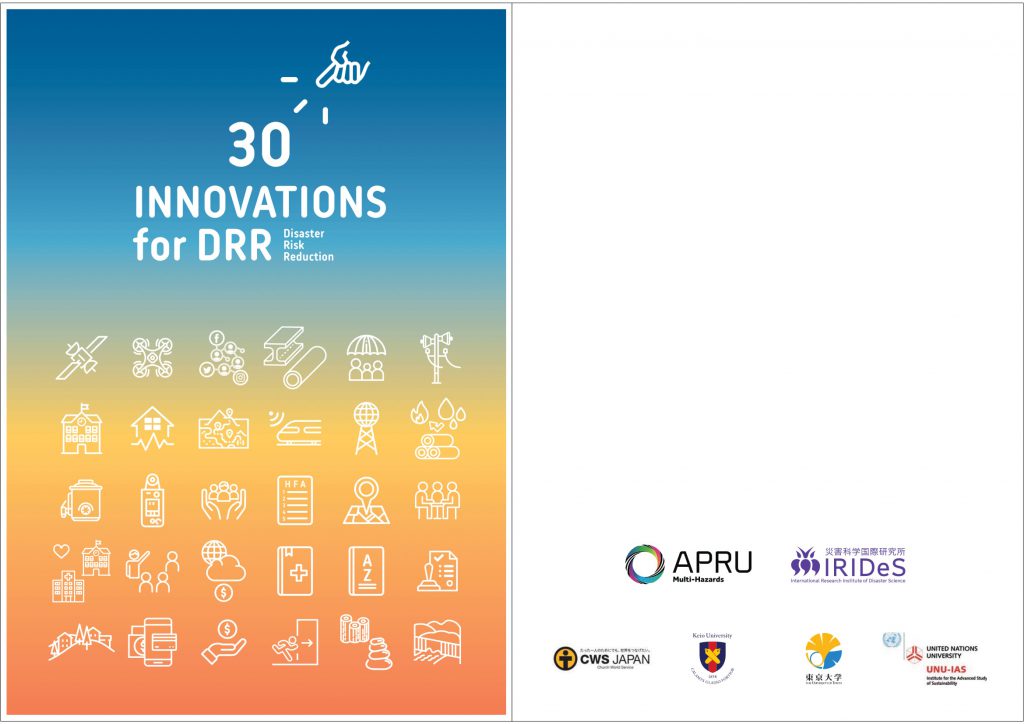[Book] “30 Innovations for Disaster Risk Reduction” was published in collaboration with IRIDeS, Keio University, University of Tokyo, UNU-IAS, CWS Japan, and the APRU Multi-Hazards Program
03/31/2019

The publication called “30 innovations for disaster risk reduction” was developed in collaboration with the International Research Institute of Disaster Science (IRIDeS) of Tohoku University, Keio University, University of Tokyo, United Nations University-Institute for the Advanced Study of Sustainability (UNU-IAS) and CWS Japan under the auspices of the Association of Pacific Rim Universities (APRU) Multi-Hazards Program. The report is downloaded from:
https://www.preventionweb.net/publications/view/64473
The report collects the innovative products and approaches considered to be extremely effective and those that have already contributed to reducing disaster risks. This does not imply that there are only 30 DRR innovations, obviously, more exist. However, among prioritized innovations, 30 innovations (14 products and 16 approaches) were selected. This collection aims to share information about the most effective technology and innovations for DRR. It also provides guidelines to identify the most important, most suitable, and innovative DRR tools that can contribute to reducing disaster risks and preparing for future disasters in the readers’ own countries or regions.
Parallel to the publication, in order to help understand the most effective innovations, a survey was conducted among representatives from academia, practitioners, the private sector, and government. The summary of the survey result is also included in this publication. Community-based DRR and Risk Management received the most votes. Half of the top-10 list was taken up with innovative approaches, which shows that both products and approaches ware widely recognized as innovations, and both contribute to the improvement of existing and traditional DRR.
We hope this publication will support the development of localized innovations for reducing future disaster risks.
Texts: Takako Izumi (Practical disaster risk reduction research group)